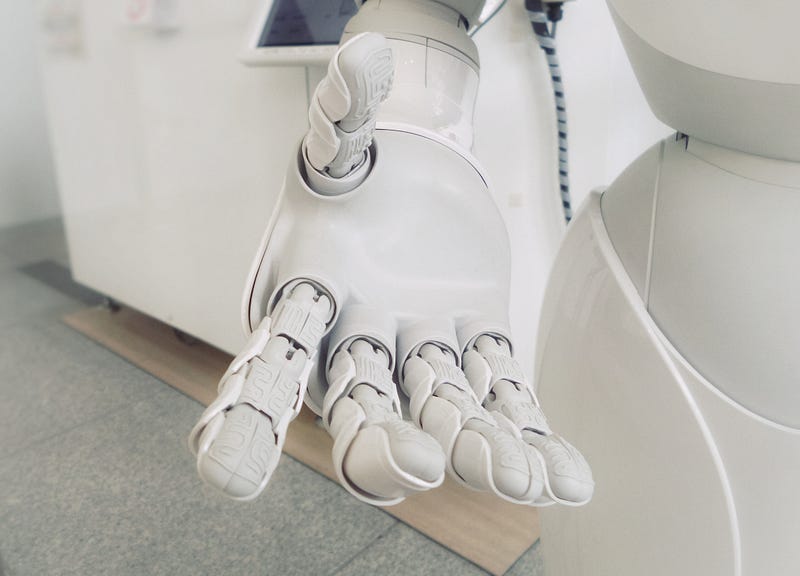# Exploring the Impact of Artificial Intelligence in Everyday Life
Written on
Chapter 1: Understanding Artificial Intelligence
Artificial Intelligence (AI) refers to the intelligence exhibited by machines and software. It empowers devices around us to process information, learn from past experiences, and make autonomous decisions. While many associate AI with futuristic concepts like intelligent robots or self-driving vehicles, its applications in our daily lives are far more extensive and nuanced than commonly perceived.
AI is often sensationalized by media portrayals, where it is depicted as a threat to humanity. However, current AI technologies are not advanced enough to pose such risks. The reality is that it may take centuries for machines to reach the decision-making capabilities of humans.
AI operates using Neural Networks, which function similarly to the human nervous system. Unlike traditional software that only produces processed outputs, Neural Networks utilize previous outputs to refine their learning. This iterative process, known as training, enhances the software's performance over time, leading to increasingly accurate results.
AI has significantly transformed the landscape of Computer Science since its inception. We often interact with AI-driven technologies without even realizing it. Let’s delve into some of these applications and explore how AI has reshaped our lifestyles.

Chapter 1.1: Image Recognition Technologies
One of the most prevalent applications of AI is image recognition. Most mobile applications leverage AI algorithms to identify and categorize images. For instance, in Google Photos, you can label individuals, and the app will automatically recognize and organize all images featuring those persons. This capability relies on AI's ability to detect patterns and classify similar images.
When a new photo is uploaded, the algorithm analyzes pixel values to find matches with previously stored images. This method is also utilized in reverse image searches on the internet, where algorithms identify similar images based on shared pixel data. Facial recognition technology is another facet of this application, allowing devices to detect and tag faces by analyzing distinctive features such as hair, eyes, and facial expressions.

Chapter 1.2: Combating Misinformation
The rise of fake news, particularly through social media, has become a pressing issue in recent years. AI plays a crucial role in identifying and countering misinformation. By analyzing keywords and phrases often associated with fake news, AI algorithms can assess the credibility of a source and flag questionable content.
When a potential fake news article is detected, it is compared against trusted fact-checking websites. If the information has been debunked, appropriate actions are taken to mitigate its spread. Social media platforms like Facebook and Twitter have developed AI systems to detect and label misleading information, helping users discern factual content from falsehoods.

Chapter 1.3: Email Spam Filtering
Email communication remains a fundamental aspect of online interaction, with billions of accounts in use. Most email service providers utilize AI to filter out spam. These spam filters analyze incoming messages for specific keywords, suspicious sender behavior, and previous user interactions to determine whether an email should be classified as spam.
The AI-driven filters are trained on datasets containing common spam characteristics, allowing them to effectively block unwanted messages and streamline communication for users.

Chapter 1.4: Smart Home Technology
Smart devices like Alexa, Siri, and Google Home have revolutionized home automation. These AI-powered assistants learn from user interactions to provide tailored responses. When a user gives a command, the device processes the spoken language by breaking it down into individual sounds, converting them into recognizable words, and analyzing their meaning to execute the desired action.
These devices continuously adapt and improve their responses based on user preferences, providing an increasingly personalized experience.

Chapter 1.5: Innovations in Banking
AI and Machine Learning have been instrumental in transforming banking services. Chatbots powered by AI facilitate customer interactions, streamline account management, and assist with transactions. Moreover, these technologies analyze vast amounts of data to monitor credit risks and detect fraudulent activities.
By implementing AI-driven solutions, banks can enhance security measures, ensuring safer online transactions and protecting against unauthorized activities.

Chapter 2: AI in Everyday Life
As we explore the various applications of AI, it's clear that its influence on our daily routines is profound.
The first video discusses "AI Examples In Everyday Life," highlighting how artificial intelligence shapes our reality in ways we often overlook.
The second video, "Artificial Intelligence in Daily Life," further explores the myriad ways AI impacts our daily experiences.
AI has seamlessly integrated into our lives, enhancing convenience and efficiency. As we continue to embrace these technologies, it is essential to ensure that they are used ethically and responsibly for the benefit of society.
Suggested Reading
- How To Crack KTU Computer Science S6
- What Is Geographic Information System (GIS)
Join my Telegram Channel for updates on my articles and behind-the-scenes content!